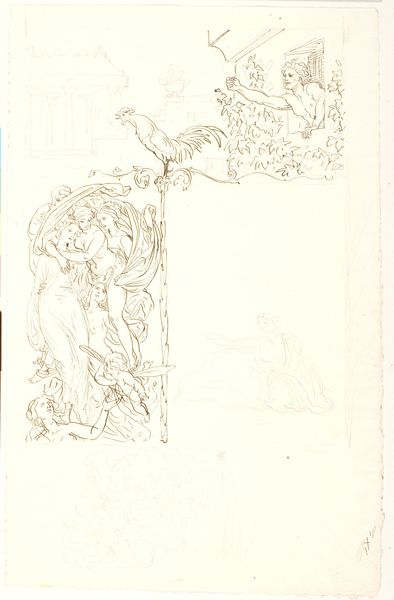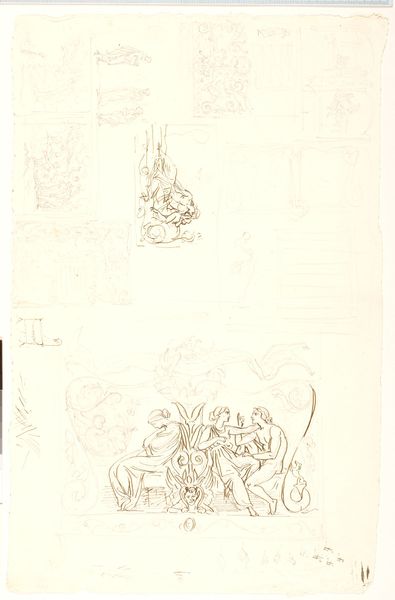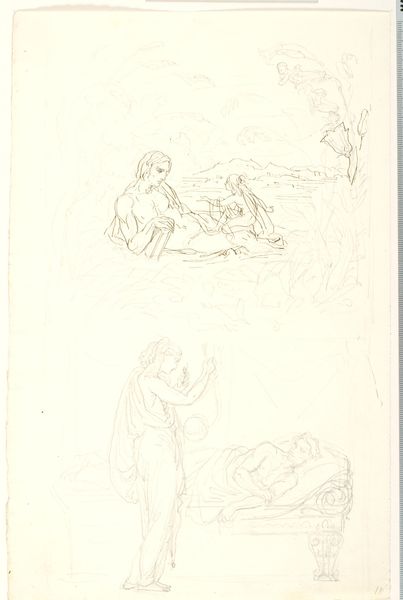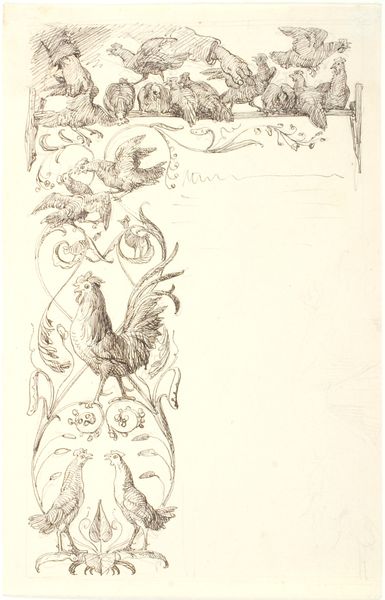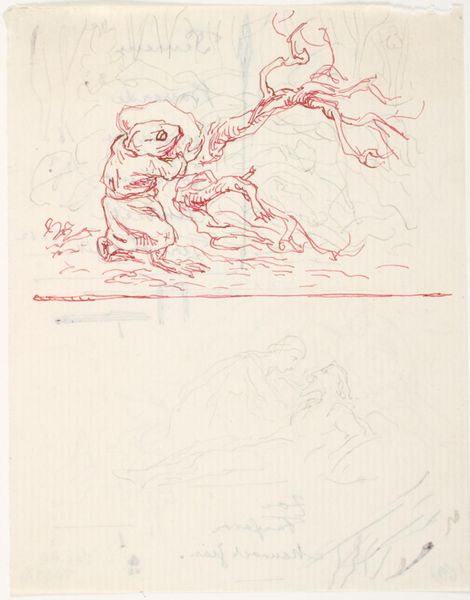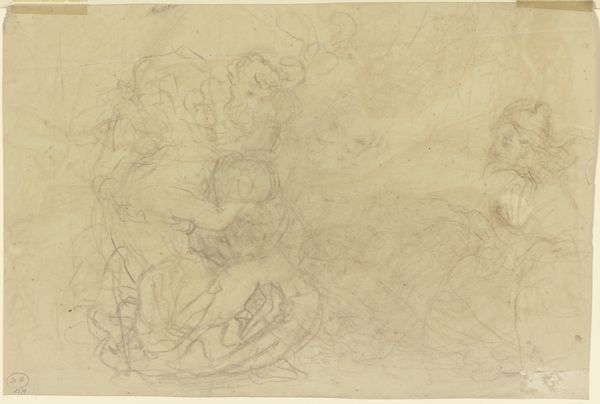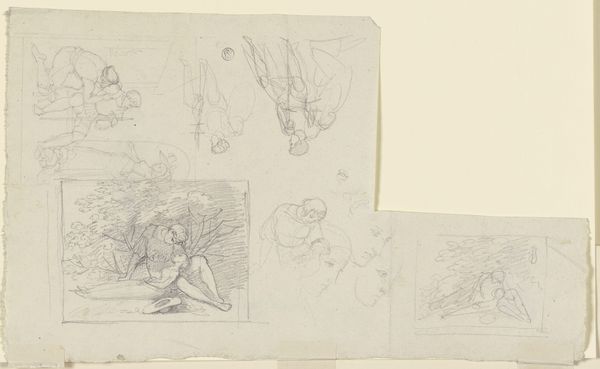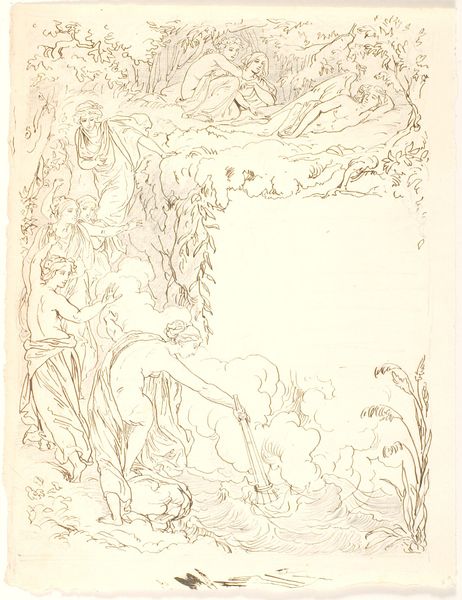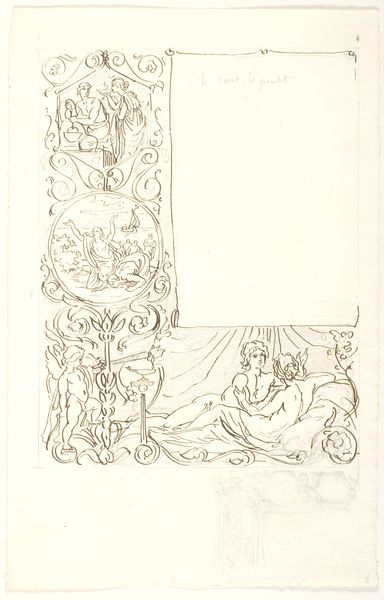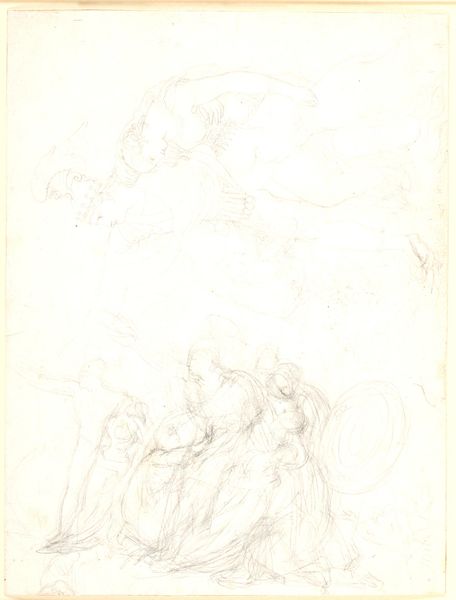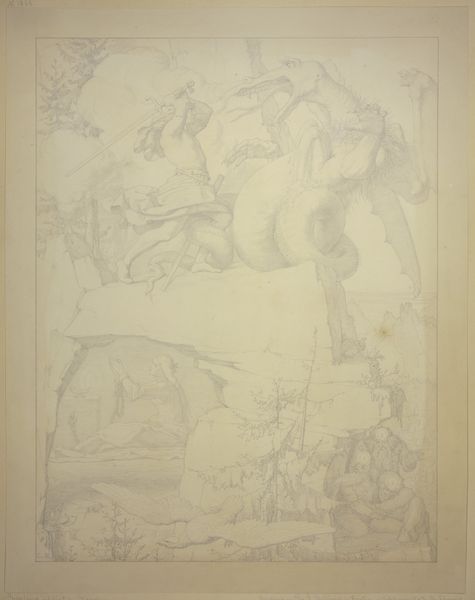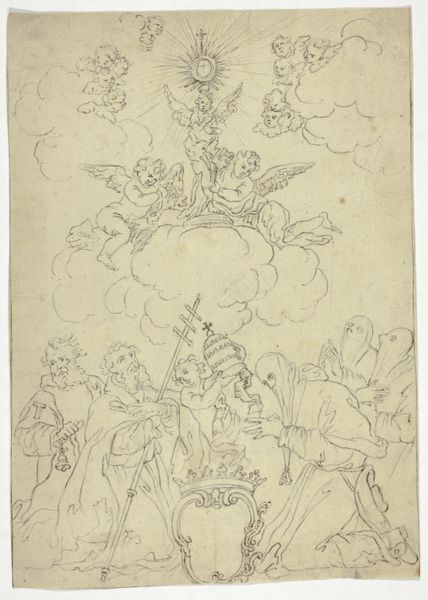
Skitser. F.o.: Den moderne fortolker. F.n.: Den gamle mand knæler for Afrodite og Eros 1860
0:00
0:00
drawing, ink, pencil, pen
#
drawing
#
ink drawing
#
allegory
#
pen sketch
#
figuration
#
ink
#
pencil
#
pen
#
history-painting
#
academic-art
Dimensions: 366 mm (height) x 245 mm (width) (bladmaal)
Editor: Here we have Lorenz Frølich's "Skitser. F.o.: Den moderne fortolker. F.n.: Den gamle mand knæler for Afrodite og Eros," created in 1860 using ink and pencil. It's delicate, almost ethereal with its light touch, and I'm immediately drawn to the lower scene, that old man kneeling. What do you see in this work? Curator: I see a layered commentary on power dynamics, both artistic and social. Consider the title, contrasting the 'modern interpreter' with the 'old man kneeling.' This suggests a shift in societal values, perhaps the decline of classical ideals. The old man's subjugation before Aphrodite and Eros could represent the fading influence of the classical world on the modern, or perhaps a critique of how we still kneel, figuratively, before idealized versions of beauty and desire? What is your reaction to that dichotomy? Editor: That's fascinating, the idea of a fading influence. It does feel like a commentary on changing times. The 'modern interpreter' seems separate, aloof, while the lower scene is filled with classical imagery. Is Frølich taking a clear stance, do you think? Curator: I think the ambiguity is key. The kneeling figure could symbolize deference to the past, but also the burden of history. It compels us to ask, who gets to interpret history and for whose benefit? Think about the roles of gender and age. Aphrodite's prominence, juxtaposed with the old man, creates a hierarchy where the female, and concepts like beauty and love that she embodies, potentially hold sway over even wisdom or experience, at least in his eyes. Do you see a narrative of power and gender at play here? Editor: Yes, absolutely. I hadn't considered Aphrodite's position as one of power in this dynamic, but that changes the reading considerably! I also like that Frølich uses mythological themes to expose real gender roles in our history. Curator: Exactly. By engaging with these historical and mythological references, Frølich invites us to question our own present-day biases. It's a reminder that even seemingly innocent artistic depictions can reflect, and reinforce, complex social hierarchies. Editor: Thank you, this has been so insightful. I now see how the artist prompts a vital conversation about history, gender, and power.
Comments
No comments
Be the first to comment and join the conversation on the ultimate creative platform.
